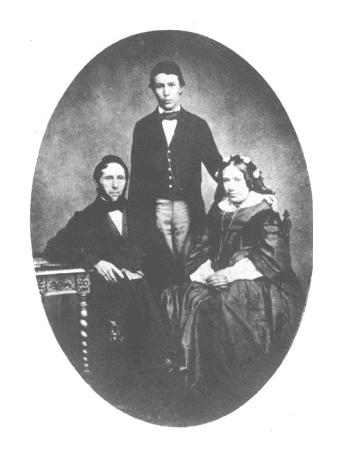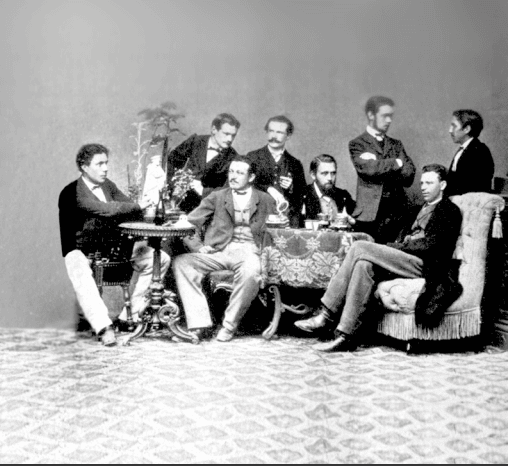On November 8th of 1895, a shy and diligent scientist named Wilhelm Roentgen saw a flicker on a fluorescent screen and changed our world with his discovery of what he called (and we still call) “x-rays”. But who was Roentgen, how did a dirty picture almost derail his life, and why did he discover x-rays?
Table Of Contents
Wilhelm Roentgen’s Early Life
Roentgen and Anna Bertha Ludwig
Wilhelm Roentgen and Heinrich Hertz
How X-ray was discovered
References
Video Script Download
Wilhelm Roentgen’s Early Life

Wilhelm Roentgen was the only child of a middle class merchant and his wife and was expected to be a merchant too but he was interested in academics and nature.
However, his education was cut short when he was 16 and a friend made a caricature of a teacher and he refused to “name the culprit”. Unfairly blamed for it, Roentgen was expelled from school! It must have been a bad drawing.
Anyway, he tried to take an exam to go to University but his “reputation” kept him away and he ended up at Zürich Technical Polytechnic, which was one of the few colleges in Europe that accepted people who had non-traditional paths to college (Albert Einstein and his first wife Mileva Maric went there 45 years later for the same reason).
It was at Zurich Polytechnic that Roentgen’s friend introduced him to Professor August Kundt. Years later, Roentgen recalled, “Kundt introduced me to Physics, and thus removed the doubt and uncertainty regarding my future.”
Roentgen and Anna Bertha Ludwig

In 1869, Roentgen got his Ph.D. in Physics, and then worked for years as Kundt’s assistant. Roentgen was such a careful and productive experimentalist, that soon he was courted as a teacher by the very schools that rejected him as a student years earlier.
Roentgen was a quite man who did not like loud parties and preferred to talk with friends at a local café. It was at such a café that Roentgen met the owner’s daughter Anna “Bertha” Ludwig.
When Roentgen was 26 (and Bertha 31) they married and remained happily married for 50 years. It was around this time that Roentgen grew a great bushy beard that became part of his “look” for the rest of his life.
They never had any biological children but 15 years later they adopted Bertha’s 6-year-old niece Josephine Bertha Ludwig (confusingly called “little bertha”) who they doted on.
His other great love was experimenting. He said, “The intellectual life gives us… the purest and highest joy of which the human being is capable.”
Wilhelm Roentgen and Heinrich Hertz

August 6, 1868 / Print on paper / Röntgen
Memorial Site, Würzburg
For the next 20 years, Roentgen happily researched and was well regarded by a small group of German scientists and virtually unknown elsewhere.
That all started to change in 1892.
That was when Roentgen’s friend Heinrich Hertz published his work on the cathode ray, which is an invisible ray that emanates from a negative electrode in a vacuum tube and can make phosphors and glass glow.
Hertz found that these rays could travel through thin gold and aluminum foil. Hertz’s assistant Philip Lenard then made a “window” out of aluminum so that the cathode rays would escape the tube and travel for 1 or 2 inches in the air.
Now, none of these people knew it, but the cathode ray is a beam of fast moving electrons and bombarding a solid with these electrons produces x-rays! Lenard covered his tube with thick cardboard that blocked everything but x-rays from exiting the side of the tube and used phosphors to detect the cathode rays outside the “window”.
Unfortunately for Lenard, he used a phosphor plate that was composed of elements that had low mass and was basically transparent to x-rays or he would have discovered x-rays first!
How X-ray was discovered

Roentgen recalled that he had, “been for a long time interested in the problems of the cathode rays from a vacuum tube as studied by Hertz and Lenard.” In October of 1895, Roentgen began to hand build different types of vacuum tubes.
Working late after his assistants had gone home on November 8th, of 1895, Roentgen noticed that a phosphor paper on the side of the excited covered tube started to glow (we have no proof of which of his many vacuum tubes Roentgen was using that fateful night, however, it really only made sense to do this experiment with a Lenard tube as this was the only one you covered and studied from the outside).
Roentgen realized that something was coming from the side of the tube and traveling long distances but the cardboard blocked out all visible and ultraviolet light (and cathode rays only went a few inches out the window).
What was happening? Roentgen recalled, “It seemed at first a new kind of invisible light. It was clearly something new, something unrecorded.” He told his wife that he was working on something that would probably make people say, “Roentgen has surely gone crazy”
What was this mysterious invisible light? How did Roentgen determine the nature of this “new ray”, why did he name them x-rays, how did he accidentally figure out how to take medical x-ray pictures, and how did this lead to an x-ray craze?
References
1 Roentegen quoted on pg. 74 of Glasser, Otto Wilhelm Conrad Roentgen
2 Glasser, Otto Wilhelm Conrad Roentgen and the Early History of the Roentgen Ray
1933, p. 10
3 referenced on p. 67 Glasser, Otto Wilhelm Conrad Roentgen and the Early History of
the Roentgen Ray 1933,

One response to “How X-rays Were Discovered by Wilhelm Roentgen”
[…] Part of what made x-rays so immediately popular is that Roentgen’s astonishing claims were easily reproduced with just the […]